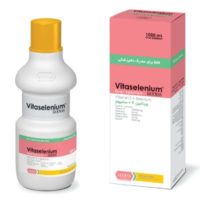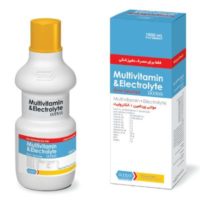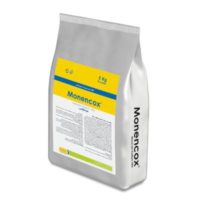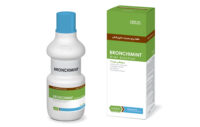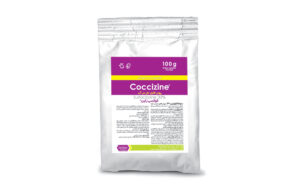
- - animals:
- - type:
- anticoccidials
- - usage:
- Water Soluble Powder
- - manufacturer:
- Rooyan Darou
- - Packaging:
- 100 g multilayer sachet
Product properties
Composition
Each gram of powder contains:
300 mg sulfaclozine (as Sodium monohydrate)
Mechanism of Action:
This broad spectrum Sulfonamide prevents conversion of para aminobenzoic acid (PABA) to Folic acid (Folic acid antagonist) while Folic acid is necessary for bacteria and coccidia.
Indications of use
This product is usefull for treatment of coccidiosis due to various Eimeria such as necatrix, maxima, acervulina, brunetti, tenella, praecox, adenoides, meleagrimitis and Salmonellosis due to Salmonella gallinarum, S. pullorum, S.enteritidis, S.typhimurium and Pasteurellosis (Fowl cholera). Also it is effective on coccidiosis in calf, lamb and rabit.
Dosage and route of administration
In poultry 2 ways is recommended:
Normal treatment of coccidiosis: Daily 50-100 mg Sulfaclozine for each kg of body weight or one 100g sachet in 100 liter of drinking water for 3 days. For treatment of Eimeria tenella and Eimeria necatrix should be increases to one100g sachet in 50 liter of drinking water.
Intermittent treatment of coccidiosis: In this case one100 g sachet should be solve in 100 liter drinking water for 1- 3 – 5th day and if it is necessary in 7- 9th or another way in 1- 2 – 5th and if needed in 6 – 9th. In farms with high prevalence of Coccidiosis, sulfaclozine is recommended consecutively for
2-3 days in third and fifth week of chick’s life. Dosage in feed is 20 sachet in 1000 kg of feed.
In sheep and goat:
1200 mg Sulfaclozine for each kg of body weight or one 100 g sachet should be solve in 10 liter water and then prescribe 12 ml for 10 kg of body weight.
Storage conditions
Keep in dry place below 25° C and away from direct sun light and humidity.
Withdrawal Time
Broilers: 14 days
Layers: 11 days for eggs
Turkey: 14 days
Precautions
In spite of tolerance to Sulfaclozine in poultry, there is a risk of bleeding in chikens after taking Sulfonamides. So it is necessary to avoid taking Sulfaclozine more than the amount recommended. If bleeding occured, add vitamin K to the diet.



